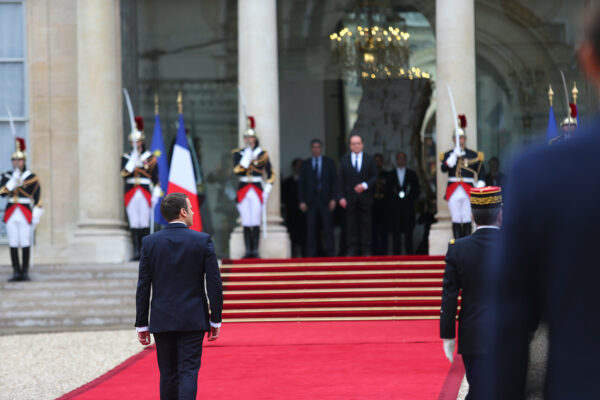
Emmanuel Macron has redrawn the political map of France.
There used to be two major parties, one of the center-left (Socialists) and one of the center-right (Republicans), with smaller parties on the far left and far right. Macron’s centrist project, La République En Marche!, has thrown them all in disarray.
- France Unbowed is a new far-left party cobbled together by Jean-Luc Mélenchon, a former communist. Although an improvement over the once hopelessly divided politics of the far left, it doesn’t get more than 20 percent support.
- For the Socialists, there isn’t much room between France Unbowed on the left and Macron in the center. Their support is in the single digits.
- The Republicans are similarly caught between Macron on the one hand and the National Front on the other, but at least they still have a substantial base of around 20 percent.
- The National Front probably hit its ceiling in the 2017 presidential election, when Marine Le Pen got 34 percent support in the second voting round against Macron.
Dilemmas
With the exception of France Unbowed, all the parties need to decide if they want to mobilize their base or appeal to moderates and undecideds.
- The Socialists could ally with France Unbowed and probably win between a quarter and a third of the electorate combined. But then center-left voters would stick with the man who has slightly more right-wing views than them on the economy (Macron) than accept the one with far more left-wing views (Mélenchon).
- The Republicans could emphasize cultural and social issues and make common cause with the National Front to speak for La France profonde. But that would mean giving up on well-educated urban professionals who support low taxes and liberalization but have relaxed social views.
- The National Front could compete with the Republicans for the support of socially conservative middle-class voters, especially in the south, but then what about the blue-collar voters in the north who left the Socialist Party because the Front had become protectionist?
The right
The Republicans are being pulled to the right by two trends:
- The defection of center-right Republicans. Alain Juppé, one of the contenders for the party’s 2017 presidential nomination, is the latest to have jumped ship.
- Laurent Wauquiez, the new leader, taking a hard line on immigration and assimilation.
The National Front has lost (or ousted) some of its populist, anti-euro voices. This makes strategic sense. As I wrote here after the election in May, the party has more potential conservative than potential nativist voters.
The left
As for the Socialists, I don’t see how they can climb out of the hole they’re in.
François Hollande’s five-year refusal to choose between statism and social democracy allowed Macron to claim the latter. He may really be more of a liberal than a social democrat, but that distinction only matters to the far left anymore. They are now (more or less) united behind Mélenchon. Between him and Macron, what’s the point of the Socialist Party?
